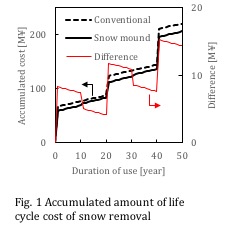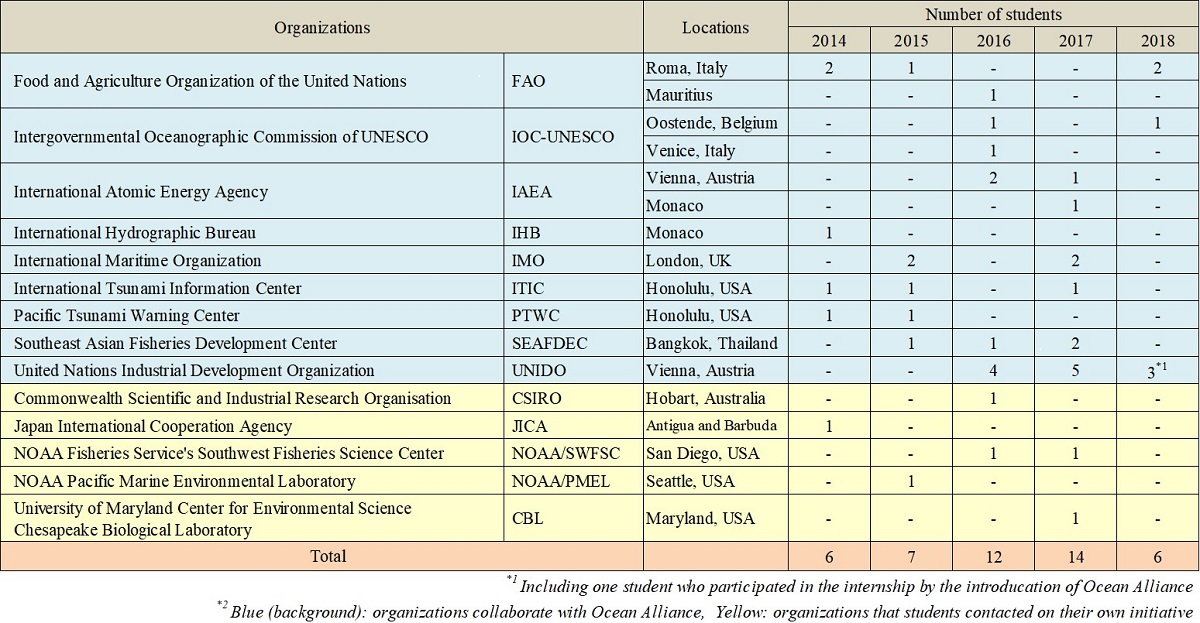
UNIDO is the specialized agency of the United Nations that promotes inclusive and sustainable industrial development (ISID) for poverty reduction, inclusive globalization and environmental sustainability. Technology transfer and business management capacity building are one of the UNIDO's mainstream activities in promoting ISID involving various industrial activities related to chemical engineering. The refrigeration sector, which includes air conditioning, is currently responsible for around 17% of global electricity consumption. For some developing countries this percentage even exceeds 40% of total national electricity demand. Environmentally friendly manufacturing of refrigeration equipment and energy efficient cold supply chain are crucial for achieving the Sustainable Development Goals by 2030 and beyond. This presentation will share UNIDO's technology transfer examples in contributing to the achievement of the SDGs. In addition, it touches on the scope and share the expected output of this symposium.
Chemical engineering is uniquely placed to drive positive impact across the full spectrum of the SDG agenda. The UN pointed out ‘education is critical for promoting sustainable development and improving the capacity of the people to address sustainable development issues’. We, as the educators in chemical engineering, should enlighten the next generation on a diverse Chemical Engineering for sustainable development.
Diverse dimensions of sustainable development are embodied in the subjects of chemical engineering, yet the profound relations and representations are to be dug out and elucidated. The academia is obliged to explore the potential and boundary of how chemical engineering can make a more sustainable world. As the UN set up the roadmap of SDGs to 2030, people in the chemical engineering community shall contemplate and act proactively on how the instruction activities can be consistent with this process.
Among all the efforts, enhancing the next generation's recognitions of chemical engineering and guiding them to face the challenges matters most. Take my introductory course at Tsinghua University as a case. A group of professors, alumni and experts in the chemical industry are invited to share their understanding of chemical engineering to first-year undergraduates. Extracurricular activities such as practices, voices-from-young-professionals and demonstration videos also help them to draw a big picture. The integration of diverse information from the introductory class presents a wide range of SDG concepts and highlights some of them (e.g. SDG 5-gender; 6-water; 7-energy; 8-work; 9-innovation, 12-consumption and production, 13-climate change etc.), which allows us to think how to integrate SDG into teaching, starting from the freshmen. Inspired by APCChE-UNIDO Symposium, we will further upgrade the course with a systematic outlook of SDG. Hopefully, the discipline of chemical engineering could be enriched with more sustainability by our efforts at least starting from education.
The academic year 2018-2019 marks the introduction of a new 4-year B.S. Chemical Engineering curriculum to the first batch of K-12 graduates in the Philippines. The Commission on Higher Education (CHED), through its Technical Panel for Engineering and Technology (TPET) is tasked with monitoring the implementation of the 2018 Policies, Standards and Guidelines (PSG) on all higher Educational Institutions (HEIs) offering B.S. Engineering Programs to ensure that the attributes of our future graduates are comparable with global standards.
Apart from complying with the CHED-TPET guidelines, the Chemical Engineering Department at the University of Santo Tomas is re-engineering its 4-year undergraduate curriculum based on a localized Conceive, Design, Implement, Operate (CDIO) approach that integrates the Sustainable Development Goals (SDGs). The objective is to not only to integrate sustainability principles but also provide an action-oriented, transformative pedagogy, which supports self-directed learning, participative and interdisciplinary collaboration, creative problem-solving, and the linking of formal and informal learning.
An SDG map in the shape of a periodic table addresses specific targets for each SDG across the curriculum and identifies courses or modules where such target can be imparted to students. Similarly, a syllabus map is created for specific courses in order to allow faculty and students to merge awareness of the SDGs with a CDIO approach that will apply innovative solutions to sustainable development issues.
This presentation shall discuss the SDG-based CDIO approach in the preparation of the curriculum and syllabus map as well as issues and lessons learned from the endeavor.
Sapporo City is the central city in Hokkaido with a population of about 1.96 million people. Roughly 13 million tourists a year from Japan and other countries visit us for our abundant nature and attractive cuisine. This city is promoting environmental policies on its “second basic environment plan” as a mean to achieve the SDGs and making connections with various bodies. Sustainable consumption activity by residents in an urban city as Sapporo, that consumes a large amount of resources and energy, is vital to achieving SDGs. We introduce the efforts for sustainable consumption of citizens in Sapporo city and trends for achieving SDGs in Japan.
The Asia-Pacific region is the cradle of production and the center stage of the world economy today. At the same time, the region is a flourishing arena of new socio-economic development driven by digital innovation. In light of these trends, it is necessary to examine and practice emerging opportunities for ensuring sustainable society, in which socioeconomic development and increases in environmental loads are decoupled from the real sense of securing people's well-being and happiness. Sustainability is not one-dimensional issue such as the prevention of global warming but is a multifaceted challenge, as the 2030 Agenda for Sustainable development indicates 17 goals and 169 targets in areas of People, Planet, Prosperity, Peace, and Partnership,
Chemical engineers have been responding to social demands by developing and implementing innovative technologies since chemical engineering inherently pursues a problem-oriented approach. However, we have to expand our focus from increasing the efficiency of existing products and systems to aiming at the well-being of society by improving people's sufficiency in the SDGs era. For this purpose, the Society of Chemical Engineers, Japan launched many activities to extend chemical engineer's scope from efficiency to sufficiency: a study group on diversifying technology implementation, the Committee on Future Energy and Social Systems, the Gender Equality Committee and the SDGs Committee, and so forth. Likewise, APCChE can be a good place in the Asia-Pacific region to achieve Goal 17 “Strengthen the means of implementation and revitalize the Global Partnership for Sustainable Development.”
By integrating these activities, we will be able to live up to paragraph 67 of the 2030 Agenda that states “We call upon all businesses to apply their creativity and innovation to solving sustainable development challenges.”
In this work, we performed a life cycle assessment of poly(3-hydroxybutyrate-co-3-hydroxyhexanoate) (PHBH), which is made from biomass resources and has a characteristic of biodegradability in both soil and seawater. To reduce the dependency on petroleum resources and decrease marine plastics, increasing attention has been paid to bio-based and biodegradable polymers. Until now, many papers about the environmental impacts of these biopolymers have been reported. However, the environmental impact of a biodegradable polymer that dissolves in an aquatic environment has not been clearly investigated yet. To discuss the effect of bio-plastics introduction to the society, it is necessary to elucidate its impacts through its entire life cycle.
We applied a life cycle assessment to PHBH products from the cultivation of biomass resource to the end-of-life, and we considered their environmental benefit to the society. The selected target is PHBH products and comparable conventional plastic products with the same function. Their resource extraction, production processes and end-of-life are different from each other. Unlike the fossil-derived plastics, PHBH is biologically synthesized from plant oil and refined for pellets. We set a system boundary including biomass cultivation, microorganism fermentation, polymer extraction, product manufacture, use and end-of-life. The end-of-life was generated as several scenarios such as incineration, landfilling, recycling and dumping depending on local waste systems and consumer behaviors. To construct the inventory data, we investigated the actual production processes in Japan. Finally, we targeted global warming for the impact category to discuss whether PHBH can become a possible measure for climate change.
Through the assessments, we will discuss which process within life cycle has a significant environmental impact and which end-of-life scenario can contribute to reducing greenhouse gas emission. Our results will help design and construct a better social system for biopolymers and provide deep insights for utilizing PHBH.
Promotion of cooling of building by snow is important in regions with heavy snowfall in terms of not only energy saving for cooling in summer, but also workload reduction of snow removal in winter because most of these regions in Japan now fases decrease of labor population. In the present study, life cycle cost (LCC) of cooling of apartment building by snow was calculated for three types of snow strage: open-air snow mound, half-underground storage, aboveground strage. Initial amount of snow storage, cooling area per household and annual cooling time were 100 t, 80 m2, 502 h, respectively. Number of households which shared the cooling energy from snow was modified from 1 to 20. Each household had 4 rooms with equivalent area. In case the amount of snow was not sufficient for cooling during the season, some of the rooms were cooled by electric air-conditioner.
Annually averaged value of the LCC (ALCC) per household showed convex dependence on number of households sharing the snow strage and there were optimum number of the households which minimized the ALCC. Snow strage of half-underground type and aboveground type had disadvantage especially smaller number of households because of high cost of construction.
Cost reduction potential in snow removal by the snow strage was also calculated. It was estimated as 160,000 Yen for 10 households for 40 years of operation period as shown in Fig. 1. It was mainly attributed to reduction of transportation of snow to dumping site.

Developing international human resources that possess a high level of expertise in many fields including chemical engineering and that show leadership at the global stage is important for establishing a sustainable society and achieving the Sustainable Development Goals (SDGs). The University of Tokyo Ocean Alliance conducts educational initiatives for fostering individuals who can succeed worldwide in ocean related areas. We started an overseas internship project from the 2014 academic year (AY 2014) and built collaborative relationships among nine international organizations and research institutions, such as the United Nations Industrial Development Organization (UNIDO), the Food and Agriculture Organization of the United Nations (FAO) and the International Atomic Energy Agency (IAEA). In particular, we have a strong relationship with UNIDO. Forty five graduate students have been sent to these international organizations from AY 2014 to AY 2018 (Table 1), and have undergone internships for two to six months. They could engage in actual projects related to their own research fields including environmental and energy issues. The objective of this study is to investigate the effectiveness of the internship at the international organizations mainly by analyzing students' internship reports. Their impressions for internship were classified into three categories. The first one is the description related to students' future and their career paths, the second one is the influence of internship on their master and doctor researches, and the third one is related to the construction of human networks and all the rest of it. The analyses of the reports for five years show that the internship was considered to be effective in establishing students' career paths through work experiences and formation of interpersonal relationships in the international organizations. It is expected that this internship system can contribute to achieving the SDGs in the long term.
